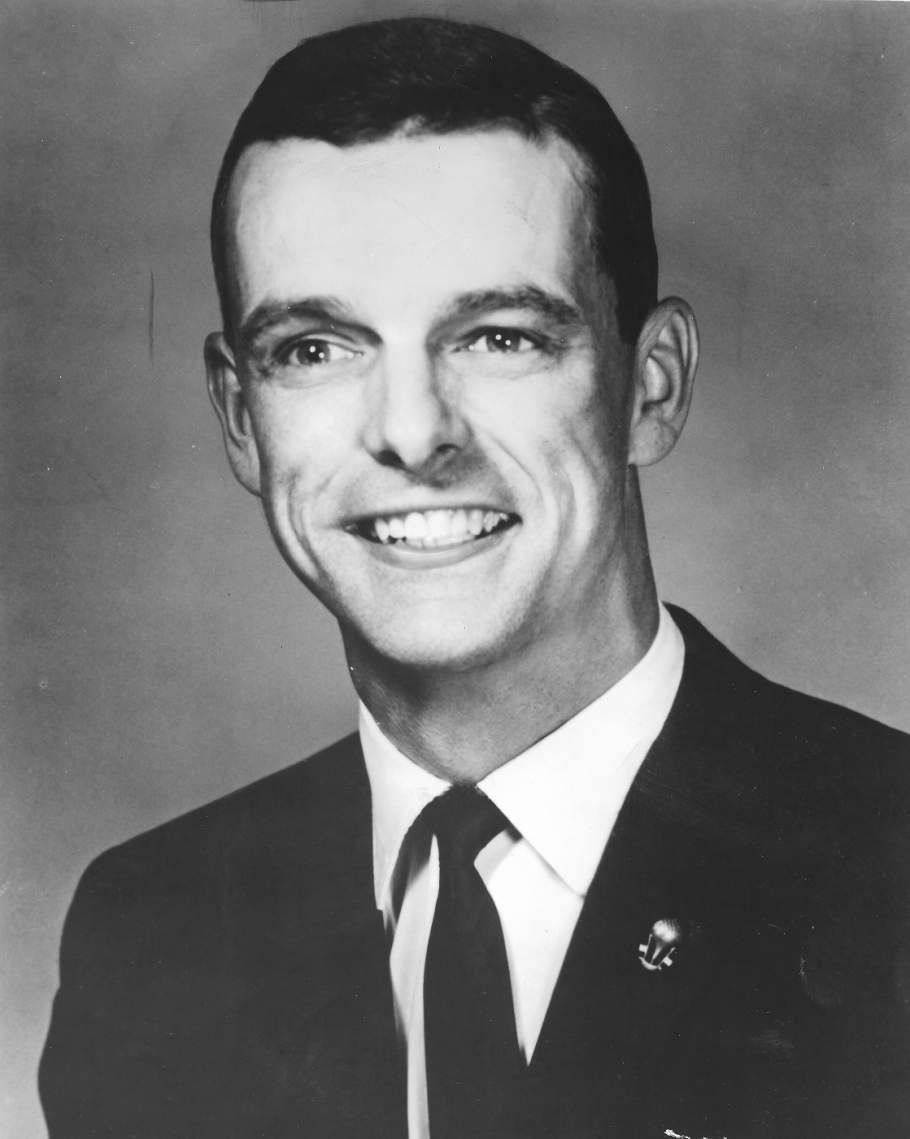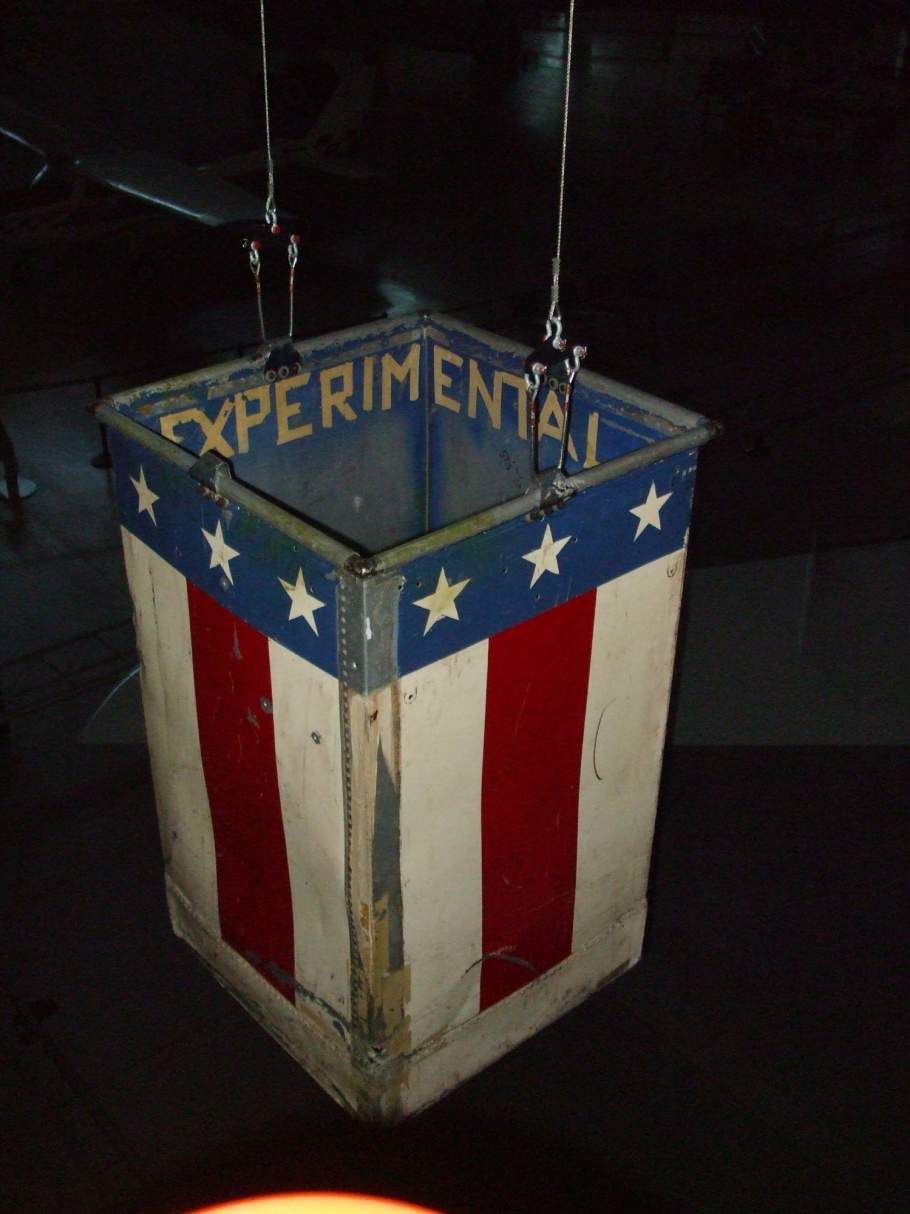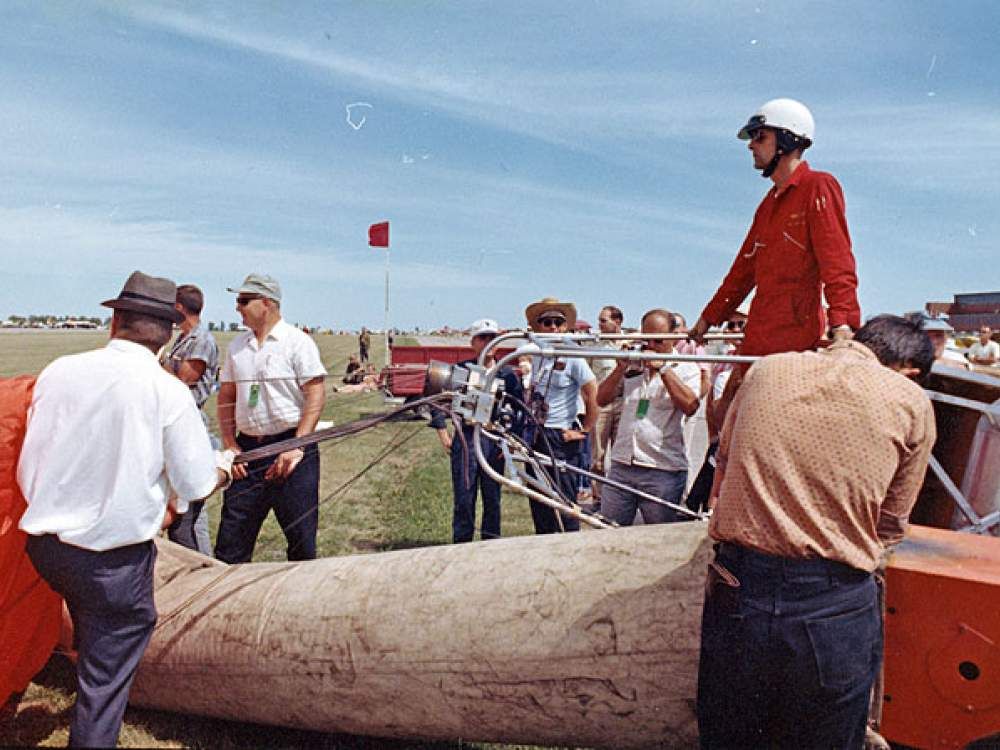Donald Louis Piccard – Pioneer of Hot Air Ballooning
The world of sport ballooning lost one of its pioneers with the death of Don Piccard on September 14, 2020. He was involved in the renaissance of hot air ballooning and a true pioneer of the sport. All of us who wonder at the sight of a hot air balloon in the sky, are in his debt.
:focal(500x375:501x376)/https://tf-cmsv2-smithsonianmag-media.s3.amazonaws.com/blogging/featured/SI-2005-25432.jpg)
The world of sport ballooning lost one of its pioneers with the death of Don Piccard on September 14, 2020.

In 1947, as a University of Minnesota drop-out, Piccard made the first post-war sport balloon flight in the United States, ascending in a basket cobbled together from sheets of aluminum, suspended beneath a captured wartime Japanese Fu-Go balloon bomb envelope constructed of mulberry leaves. Twelve years later, in 1959, he painted the little basket red, white, and blue, and flew it with a more conventional balloon to commemorate the centennial of the first aerial airmail flight in American history. Now somewhat battered as a result of rough landings, that basket hangs in the our Steven F. Udvar-Hazy Center, almost lost among the much larger items in the world’s finest collection of record-setting balloon baskets and gondolas.

Piccard was born on January 13, 1926, into a family of scientific adventurers. His uncle, the Swiss scientist Auguste Piccard, developed both the pressurized balloon gondola and the bathyscaphe, which enabled human beings to climb to the top of the atmosphere and dive to the bottom of the ocean. In 1932, Auguste piloted a hydrogen balloon to an altitude of 53,000 feet, launching an era of record-setting high-altitude scientific balloon flights. In 1960, Auguste’s son Jacques became one of the first two people to descend to the deepest point of the ocean. In 1999, Jacques’ son Bertrand completed the first non-stop circumnavigation of the globe by balloon with Brian Jones.
Auguste’s brother Jean-Felix and his American wife Jeanette moved to the United States in 1926 with their three boys, John, Paul, and Don. Jeanette became the first American woman to earn a balloon pilot’s license and on October 23, 1934, Jean-Felix and Jeanette flew a balloon and gondola to a record altitude of over 58,560 feet over Lake Erie. The pair settled into life as faculty members at the University of Minnesota, where they would continue to develop new approaches to high-altitude ballooning, including the development of the world’s first plastic scientific balloon, flown from the university football stadium in 1936. Thanks to Don Piccard, that balloon and its unique ballasting system are now in the National Air and Space Museum collection.
Don Piccard began crewing for his mother before he was 10. He remembered the day Orville Wright visited the Piccard’s balloon hangar at Ford Airport in Dearborn. “I was a little kid and he paid attention to me. He was a very, very nice old man.” While still a teenager, Piccard enlisted in the Navy and spent the war years as a balloon and airship rigger. Following his milestone 1947 flight, he purchased a war surplus Navy balloon and organized the Balloon Club of America. In 1957, inspired by his father’s design of a multiple balloon system, he made the pages of Life magazine flying a rig of seven gas Pleiades balloons. Hired by the Schjeldahl, a manufacturer of plastic bags, he experimented with layers of mylar to construct inflatable structures and super pressure balloons for use in high-altitude scientific flights.

In October 1960, engineer Ed Yost made the first piloted flight of a modern hot air balloon system. Two years later, Piccard joined Raven Industries, a company established by Yost and colleagues, who were operating top secret government balloon projects. Piccard was hired as civilian “cover” to explore the potential of a private market for hot air balloons. In order to sell Raven’s single-seaters, Piccard essentially invented modern hot air sport ballooning. He organized the first great sanctioned hot air balloon event in conjunction with the 1962 St. Paul Winter Carnival. In an effort to attract headlines and new pilots and popularize the sport, Piccard made the first hot air balloon flight across the English Channel with Yost in 1963.
Raven lost its government contracts in 1964 and, for a time, stepped away from the tiny commercial market. Piccard moved to southern California, established his own company, and, after a slow start, rode the first wave of enthusiasm for hot air ballooning into the 1970s. He regarded his introduction of load tapes to support the weight of the basket from the entire envelope as his most important technical innovation. In 1980, Piccard licensed the production of Piccard Balloons to another firm and stepped away from commercial manufacturing. He did not abandon ballooning, however, focusing on projects ranging from record high-altitude attempts to the development of relatively small one person balloons.
As a historian of ballooning, and the National Air and Space Museum’s curator of lighter-than-air flight for several decades, I was privileged to know many of the men and women involved in the renaissance of hot air ballooning, and to bring examples of their technology, and their stories, into the national collection. Don Piccard, always willing to share his memories, and ever patient with the bureaucratic processes of the Smithsonian, was a favorite. He will be missed. All of us who wonder at the sight of a hot air balloon in the sky are in his debt.
Tom Crouch is the curator emeritus for the Lighter-than-Air collection at the Smithsonian National Air and Space Museum.
